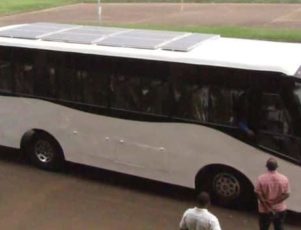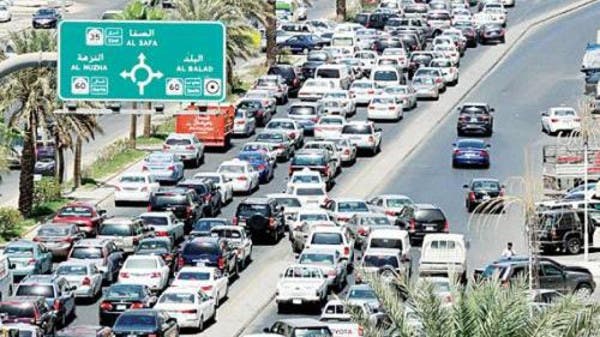A government-backed motor company introduces the continent’s first sun-powered bus.
With its abundant sunshine and growing need for efficient public transportation, Africa seems like a natural place for solar-powered vehicles. Now that idea will be tested with the introduction in Uganda of the continent’s first solar-powered bus.
The bus, called the Kayoola, is the brainchild of Paul Isaac Musasizi, chief executive officer of the government-owned Kiira Motors Corporation of Uganda.
Uganda has “non-stop sun,” Musasizi said. “No other countries manufacturing (solar) vehicles are on the equator like Uganda. We should celebrate that and make it a business.”
Powered by solar panels on the roof
He said the 35-seat bus could travel 50 miles. It is powered by two batteries. One battery is connected to solar panels on the roof; the other is charged electrically for longer trips and night journeys. It takes only one hour to charge each battery, according to Musasizi.
Kiira has produced a prototype of the Kayoola and ran a test drive in February in Kampala.
The prototype cost $140,000 to produce but the company said the price tag would be about a third of that amount – $45,000 – with mass manufacturing.
Ambitious solar vision
The bus is one part of Musasizi’s larger vision for a solar-powered automobile industry in Uganda, including service stations that have solar pumps to charge cars instead of selling them gasoline.
He wants Uganda to follow the lead of Morocco – which recently switched on the world’s largest solar power plant – in developing solar farms to power vehicles and other everyday devices.
He noted that efficient transportation is essential to the Ugandan economy.
“Without proper transportation, we cannot have a good economy.”
The Ugandan government funds Kiira through the Presidential Initiative on Science and Technology. The small company currently has 32 people on staff.
Company seeks investment to grow
Musasizi said he also hopes to attract private investors who are interested in green technology. He would like to grow the company to 200 employees in five years and produce 50 buses a year.
Uganda has been planning to develop an auto industry since 2007 after students and staff from Makerere University visited the Massachusetts Institute of Technology to study innovation.
Kiira plans to start manufacturing automobiles in 2018.
The auto industry is part of Vision 2040, a blueprint for Uganda’s economic development launched late last year by Prime Minister Ruhakana Rugunda. Rugunda said the government would support Kiira until the company is able to put vehicles on the market.
Kiira plans to produce sedans, pickups and crossovers, starting with production of 305 automobiles in 2018 and growing to 60,000 per year in 2039.
Nigeria also boosts auto production
Nigeria is also seeking to grow its auto manufacturing, primarily to replace imported cars with locally produced vehicles. Nigeria plans to assemble 500,000 autos annually for the next five years compared to production of 10,000 vehicles in 2014.
International automakers including Nissan, Ford and Honda, as well as local manufacturers are gearing up to increase production. The government has granted licenses to 36 manufacturers.
First solar bus operates in Australia
Meanwhile, solar vehicles remain a rarity globally; Australia, China, Austria and the United States have developed solar vehicles while India is working to launch solar-powered transport.
Australia began operating the world’s first solar-powered bus in 2007.
The Tindo as the bus is named after an indigenous word for sun, operates in Adelaide. It uses 100 percent solar power that it receives from a photovoltaic system at Adelaide’s central bus station rather than from solar panels on the bus. The bus can carry up to 40 people, including 25 seated.
While Uganda is not the first country to develop solar vehicles, Musasizi hopes the country will become a leader in the field.
“Our passion for automobiles will help us develop solar motor technology,” he adds. “I’m hoping we will become known as the innovation hub for solar transportation technology in the world.”



